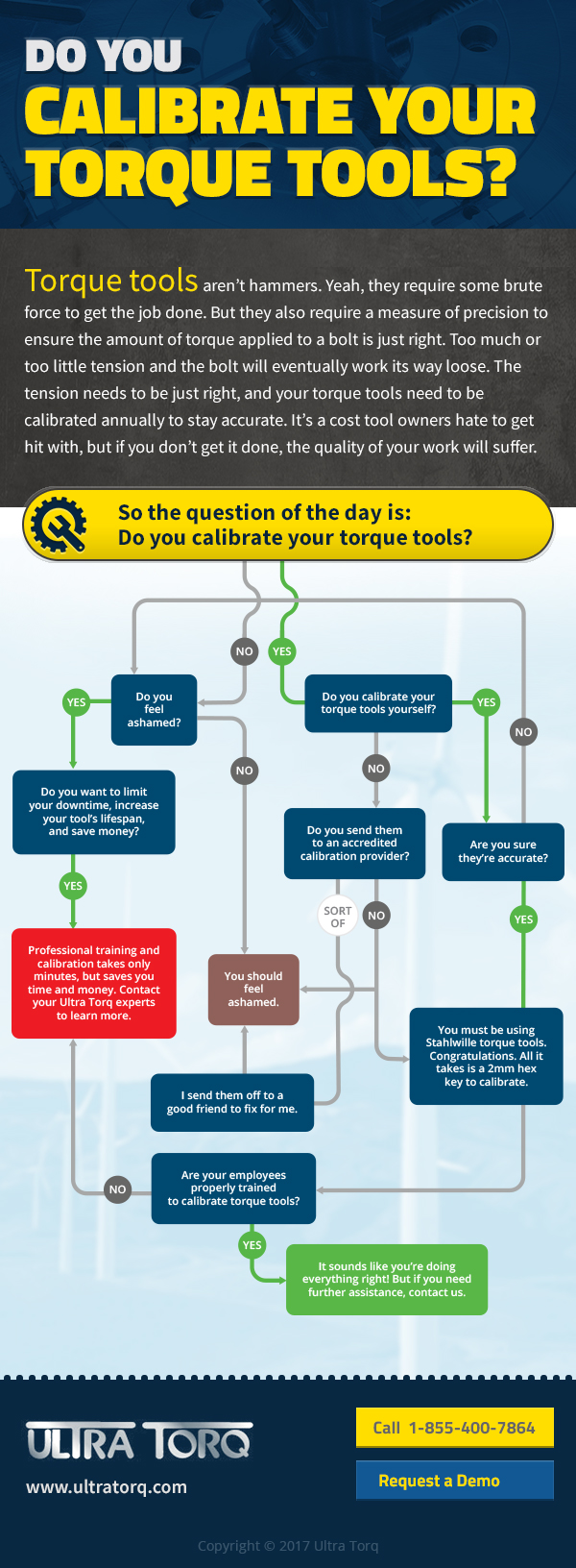You go to the doctor and dentist regularly for checkups, right? (At least, you should be…) You take your car into the shop for its scheduled inspections, don’t you? Guess what? You should also be conducting regular calibration and maintenance on your torque tools to ensure you get the right amount of clamp load on every nut and bolt you tighten.
Here’s Why You Need to Calibrate Your Torque Tools
This infographic will walk you through the ins and outs of torque tool calibration.
5 Things to Remember About Torque Control
1. Know your torque needs before you begin
Consider the maximum load that can be placed on the fastener, the strength of joined materials and the hardness and/or softness of the joint in question.
2. Use the right tools
To have a stronger sense of torque control, you need to use the right tools.
3. Test your equipment
Use torque testers to VERIFY tools ARE IN CALIBRATION and field tests to confirm that your tools are maintaining settings.
4. Train your employees
Use your time and resources to train and educate your employees on new software, equipment, and the importance of proper maintenance and storage procedures.
5. Regularly inspect your tools
Take the time to check your torque tools to look for damaged or defective parts.
Why You MUST Calibrate Your Torque Tools
Torque tools offer a range of precision to ensure the amount of CLAMP LOAD applied is just right. Why?
- If the joint is under-tightened, it can vibrate loose and come apart completely
- If the bolt is over-tightened, it can strip or break from over-stretch.
So, it’s vital to get your torque-tension right the first time, so calibrate and check your tools regularly to avoid issues and extra costs later down the road.
Let’s Calibrate Your Torque Tools
Keeping on top of your torque tool maintenance is important, don’t wait any longer. Contact us today to learn more about torque tool calibration, request a FREE demo, or ask one of our experts how we can help you.

